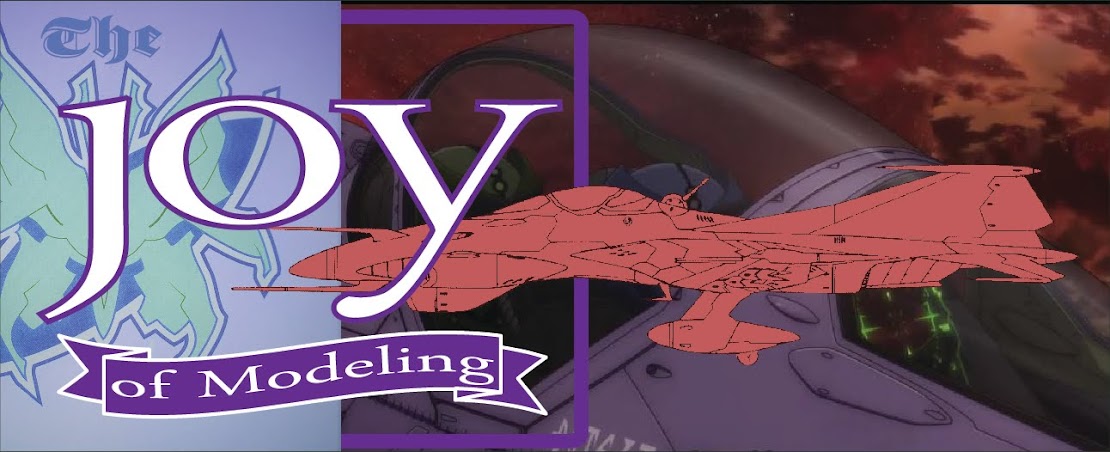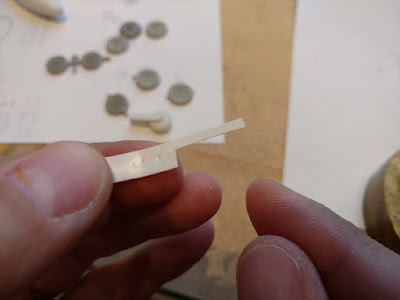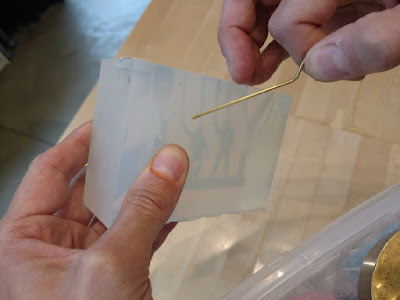Lest all you all forget where we are headed:
There are several interpretations of the landing gear door, the model I am creating will be a more detailed version of the CG animation from the show. The blueprint style drawing in the book looks much different. The shape has been drawn out on tape and I compare to screen grabs.
The outline is drawn in Sharpie. I cut inside the lines so I can file a nice edge.
Let your tool do the work.
A rough version of the landing arm and wheel are hacked out. I would like the mechanism to fit into the spat once it is retracted.
Here is the image from the 2199 Garmillas reference book. Very sweet illustration, but sadly the pivot points must be adjusted to work in our world.
Another view. The internal brass support structure ultimately has to find it's way from the wheel to the fuselage core.
A floor is cut to put in.
More test fitting. The placeholders give me something physical to reference as I figure out how this is going to look and get made.
The tire has a unique tread pattern detail, much like a rounded diamond. I do a quick test by grinding the tip of a brass rod itno this shape and embossing with a hammer. This will work. More on this later.
The retraction arm is hacked out. Pivot points will need to get moved around, so the arm can clear the tire when fully retracted.
Gear door is paper. I'll use these dimensions to make the nice parts for the final model.
Studies of the swing arm.
I'll use large styrene rod stock as the rounded bits on each end. Three .100 styrene strips are sandwiched together using double stick tape. One end has an opening for a .250 disc, the other .312.
The part I want as the swing arm is between the two holes. I make three sets (the other two are back ups). One is cut off.
Remember, this made of 3 layers of .100 styrene. The extra material is not cut off until the arm is completely shaped. This acts as a handle during shaping.
Slowly grinding away. Not the metaphorical kind.
Here are the three layers pulled apart.
The arm needs to be thinner, I make a sanding jig to thin down the two outer arm sections.
Sand down flat to the jig.
Like so.
Here are the three sections together. The middle one gets chopped, creating the space between the forks for the tire.
Like so. That's it for now, more fun with bits of plastic in a few days, we'll finish the swing arm and make a tire!
Ghale Garmillon!
Here are the three layers pulled apart.
The arm needs to be thinner, I make a sanding jig to thin down the two outer arm sections.
Sand down flat to the jig.
Like so.
Here are the three sections together. The middle one gets chopped, creating the space between the forks for the tire.
Like so. That's it for now, more fun with bits of plastic in a few days, we'll finish the swing arm and make a tire!
Ghale Garmillon!



































































